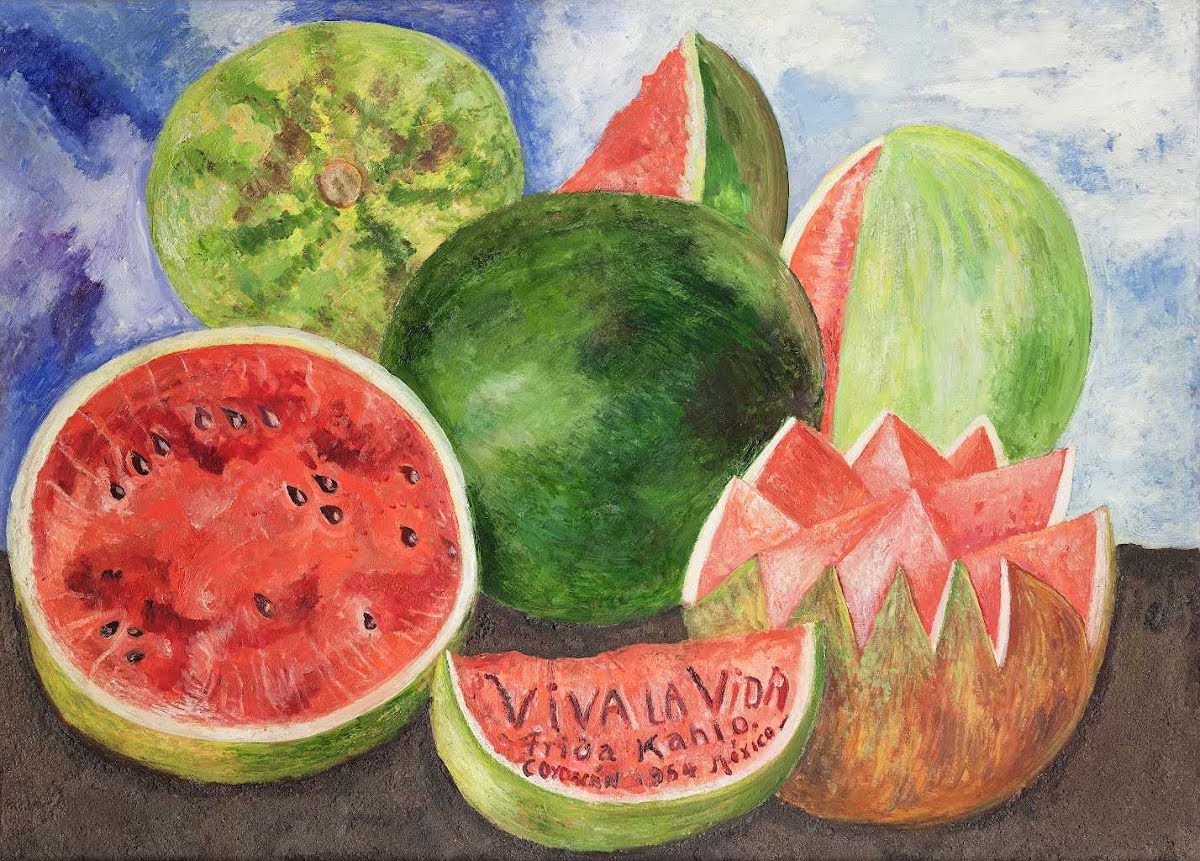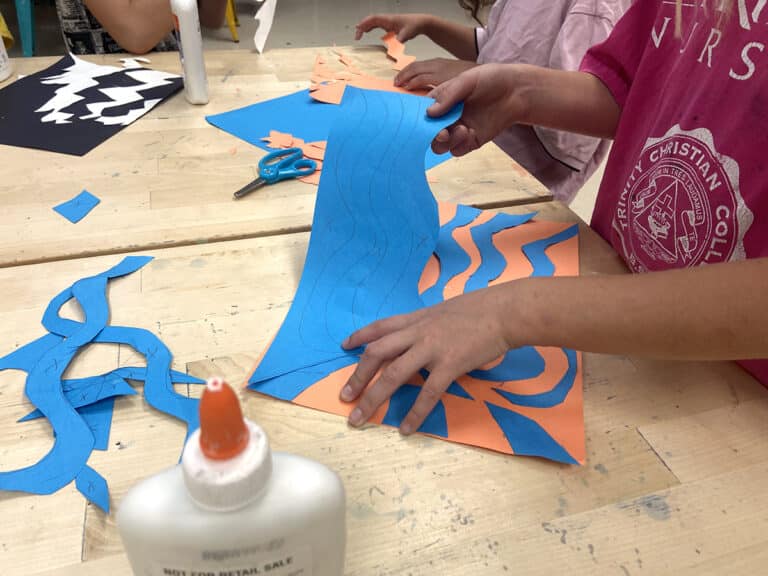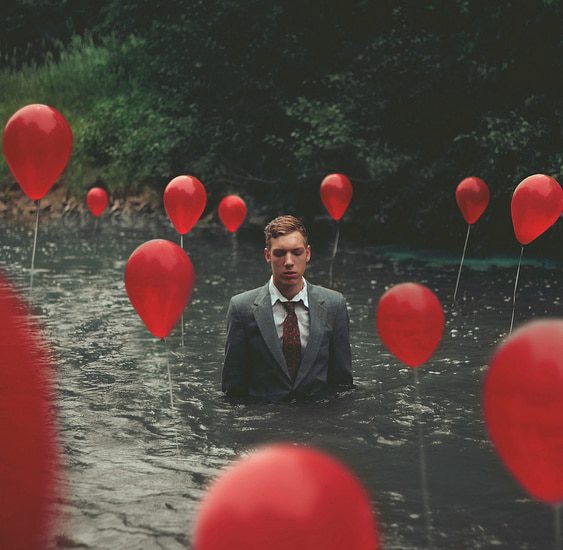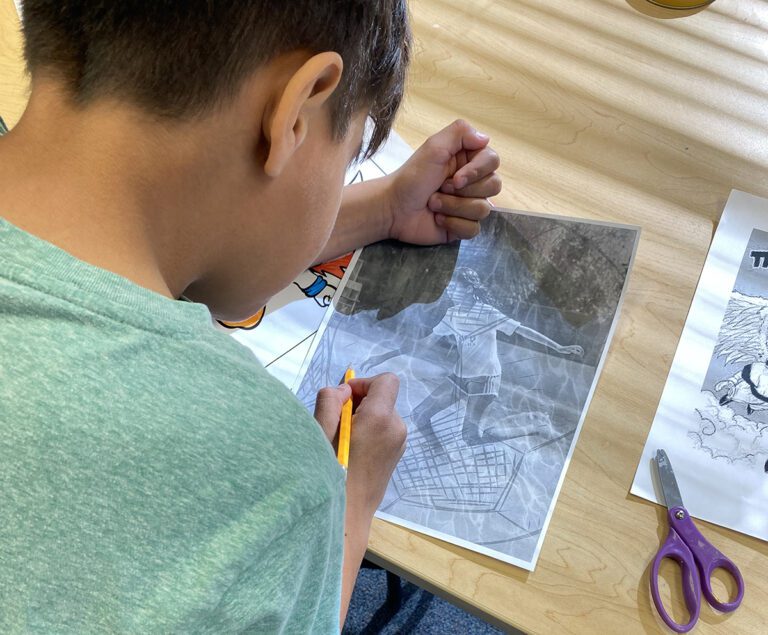Color plays a huge role in everyday life. Color helps us regulate emotions, read signs, communicate ideas, and express ourselves. Wielding the power of color is important for our students. As art teachers, we know color is valuable because it’s one of the Elements of Art. Color theory takes color to another level. Color theory encompasses the principles of how color works and how to use color in different ways. It helps explain color mixing and how brands advertise. Teaching color and color theory year after year can get dry. Liven up your color unit with a few new artists to inspire both you and your students this year.
In the classroom, share these 10 artists with your students for a fresh perspective on color theory.
Tint
A tint is any hue mixed with white to make it lighter.
Claude Monet used tints to highlight the pond, flowers, and water lilies in his painting, Waterlilies. Monet repainted the flower garden many times in his career. He eventually focused on the details in the pond, the reflection of the water, and the overall mood of the moving liquid and lily pads. Tints show the time of day he painted, where the light source may have been, and the delicate foliage. Bring this artwork to your students with the aid of Claude Monet’s artist bio in FLEX Curriculum.
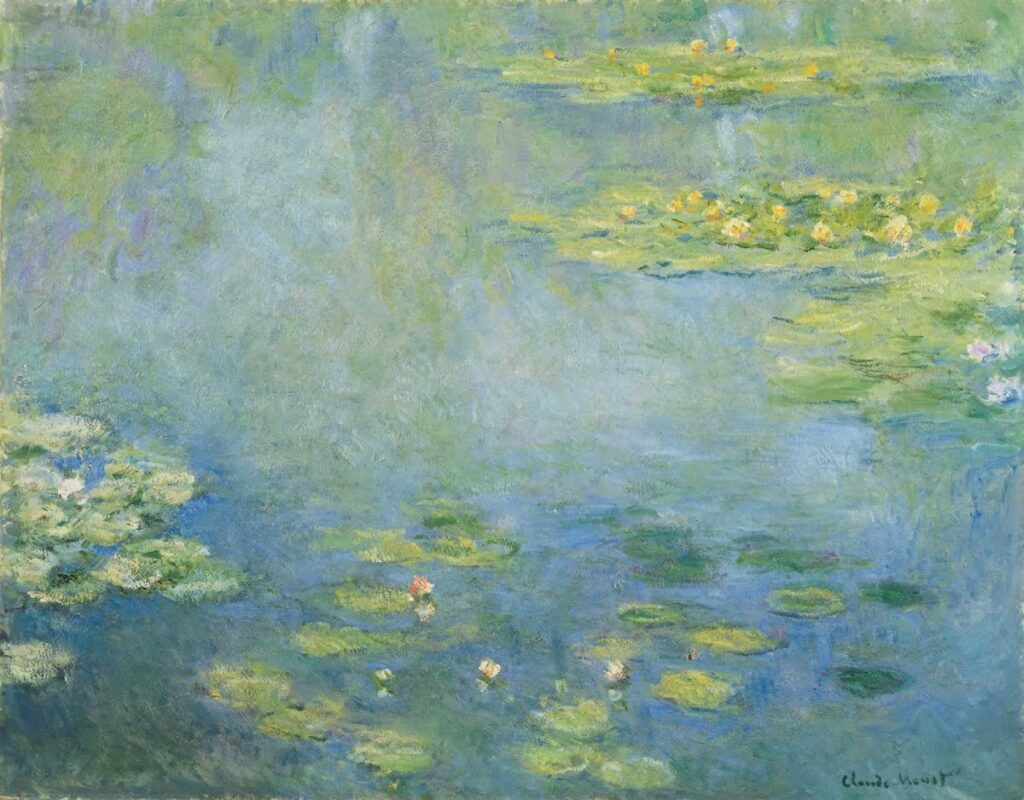
Julia Benz is a contemporary artist and muralist. Her work features dynamic lines, overlapping forms, patterns, and color blending. Benz’s subject matter often shifts from figures to conceptual ideas on a large-scale mural. In her artwork behind her, the tints allow us to see texture, movement, and depth.
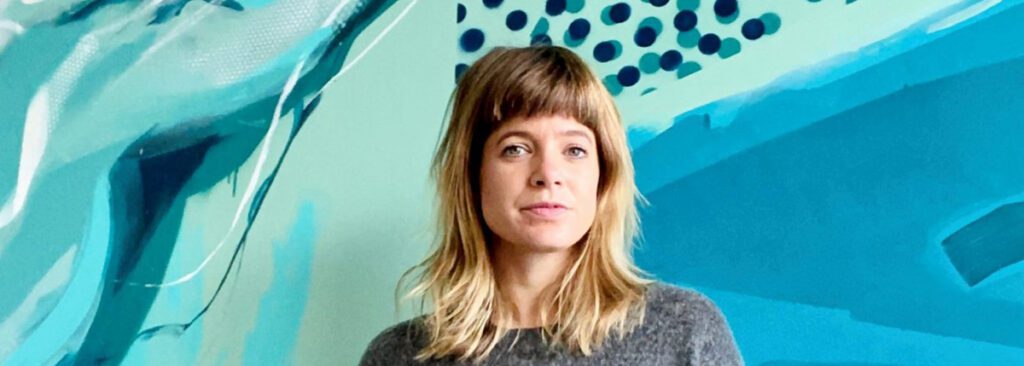
Your turn!
Practice how varying tints can affect the mood of an artwork with the Color Changes Everything Lesson in FLEX Curriculum. If you’re looking for a neat way to distribute paint for a tints and shades color mixing lesson, check out how Michelle Parven used inexpensive plastic food trays in her DITL episode.
Tone
A tone is when an artist adds grey to a color. Tone can also cover a range of a color, such as “orange tones.”
Salvador Dali is one of the world’s most notable Surrealist artists. He sported a recognizable mustache and a vast imagination. Dali painted dreamlike artworks that look incredibly realistic. The Enigma of Hitler plays with proportion, translucency, and tone. He mixes a variety of cool blueish-grey tones and builds them up with layers and brushstrokes. Introduce Dali to your students with his artist bio in FLEX Curriculum.
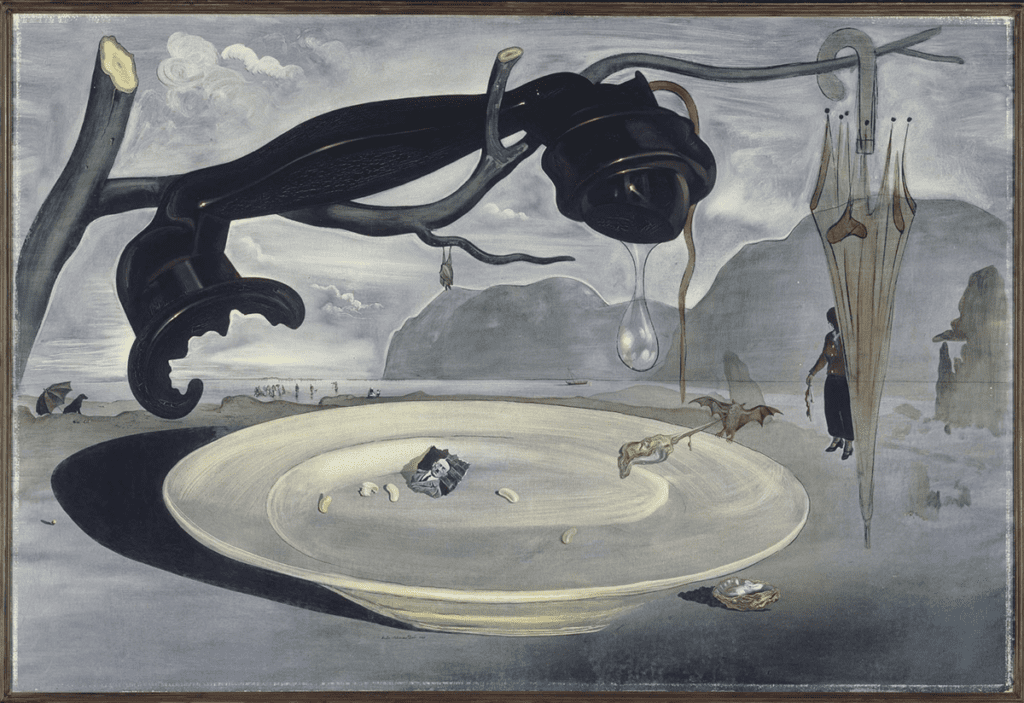
Tim Burton is a contemporary artist and filmmaker who also heavily uses tone. He adds grey tones to his characters (both cartoon and actors) and settings to create a distinct style and mood.
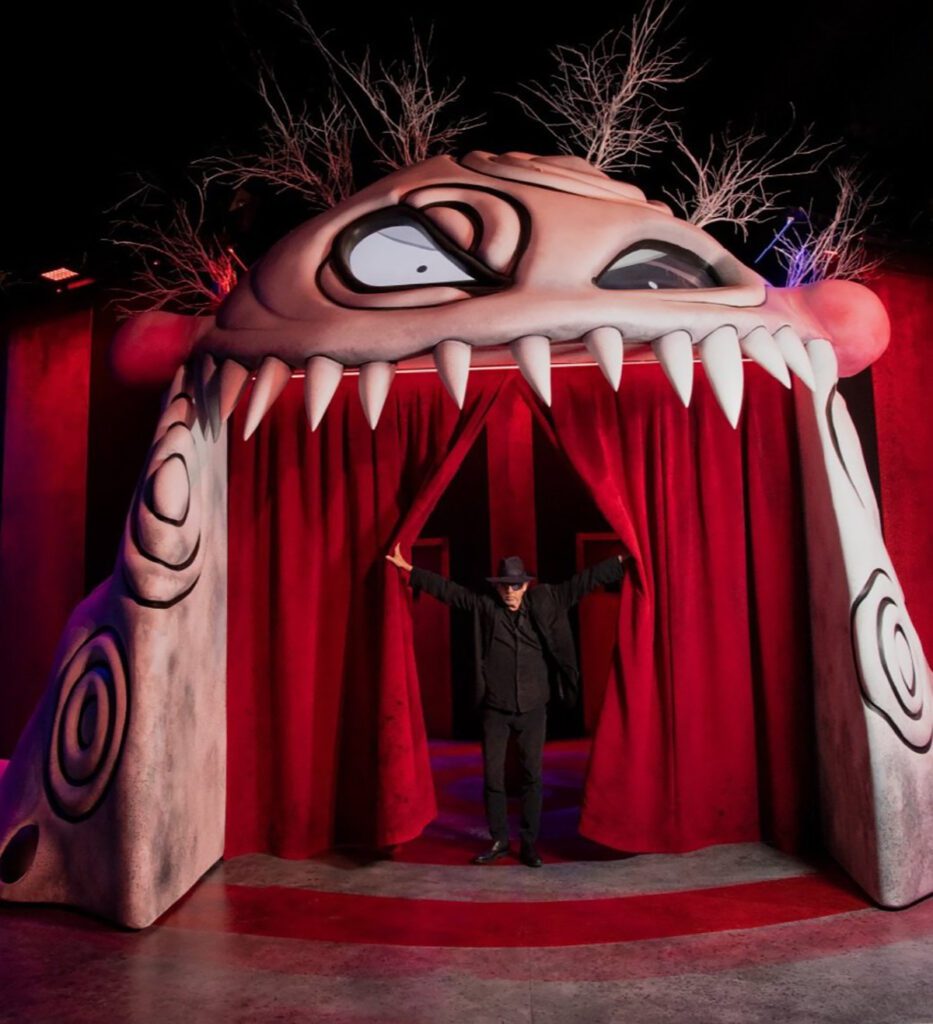
Your turn!
Group artists into teams. Provide premixed gradients of grey with different colored undertones. Give each team a gradient to reproduce. The team that finishes first with the closest match, wins!
Shade
Add black to a pure hue to create a shade and make it darker in color.
Maurits Cornelius Escher, most commonly known as M.C. Escher, is one of the most innovative and iconic artists of his time. He used puzzles, tessellations, mind tricks, and optical illusions to create intricate, photorealistic artworks. In Day and Night, light values are on the left side and the deepest values are on the right side. In this case, adding more lines and thicker lines creates shading or darker values. The contrasting birds create interest and further emphasize the difference between day and night. Share M.C. Escher’s artist bio from FLEX Curriculum.
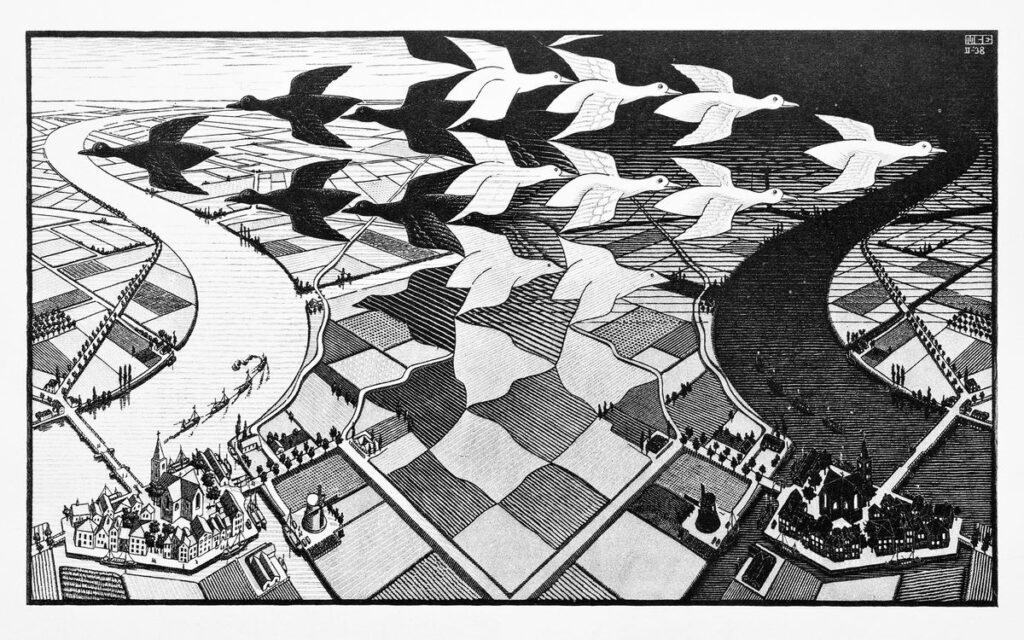
Gina Julian is a contemporary artist who creates photorealistic paintings that look like giant paint smears. Julian has the skill set to make her paint blobs appear shiny, juicy, and wet. By mixing shades of a color, she is able to give the illusion of depth and realism.
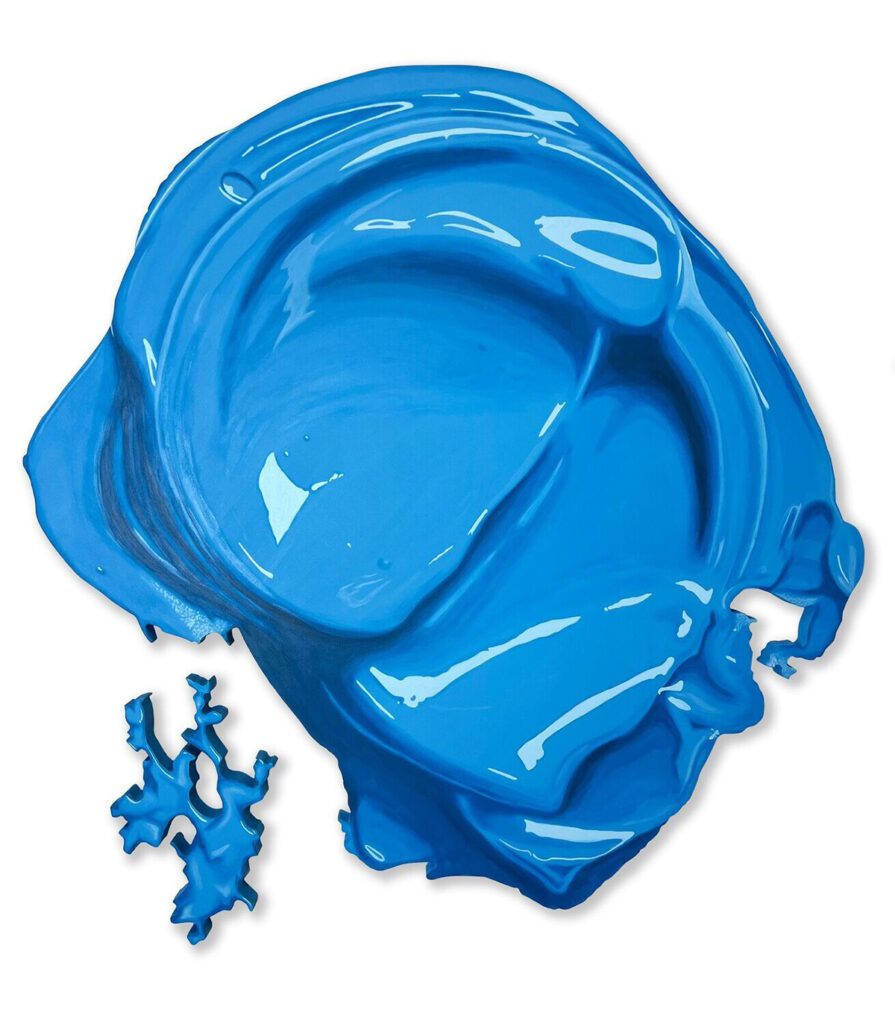
Your turn!
Use colored pencils to explore shade. Make three value scales using the following techniques to create darker shades of one color: pressure, black, and a complementary color. Compare and contrast the results!
Complementary Colors
Colors directly across from each other on the color wheel are complementary. The most common pairings are red and green, blue and orange, and violet and yellow. Complementary colors can be strategically used to create contrast and make something stand out.
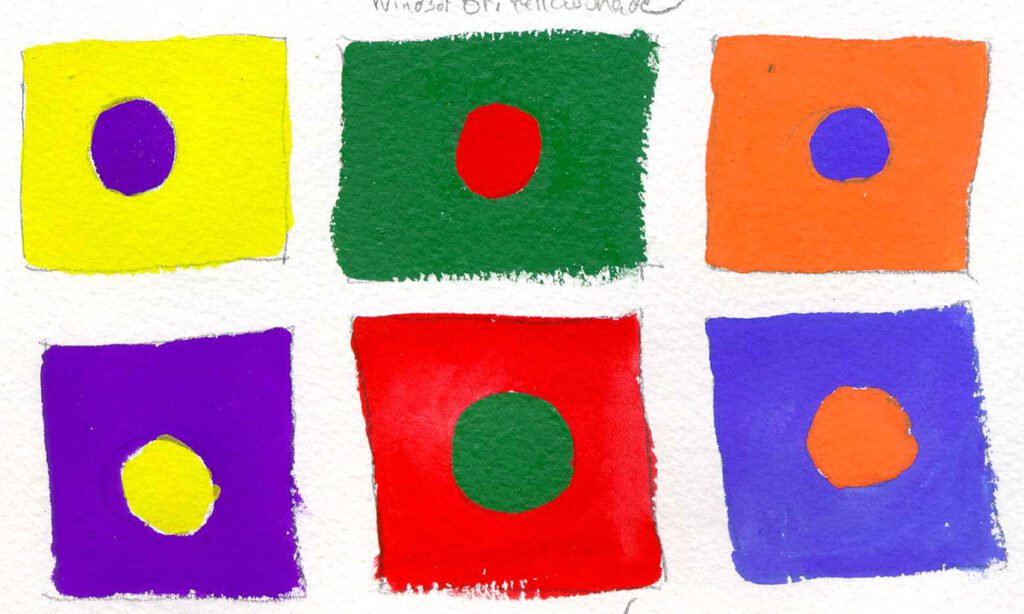
Frida Kahlo used reds and greens in her watermelon still life, Viva la Vida, her final tribute to life. The pieces of fruit sliced at different angles show variations of color and shape. The colors push each other forward to parallel Kahlo’s vibrant personality and character. Integrate this still life in your lesson with Kahlo’s artist bio in FLEX Curriculum.
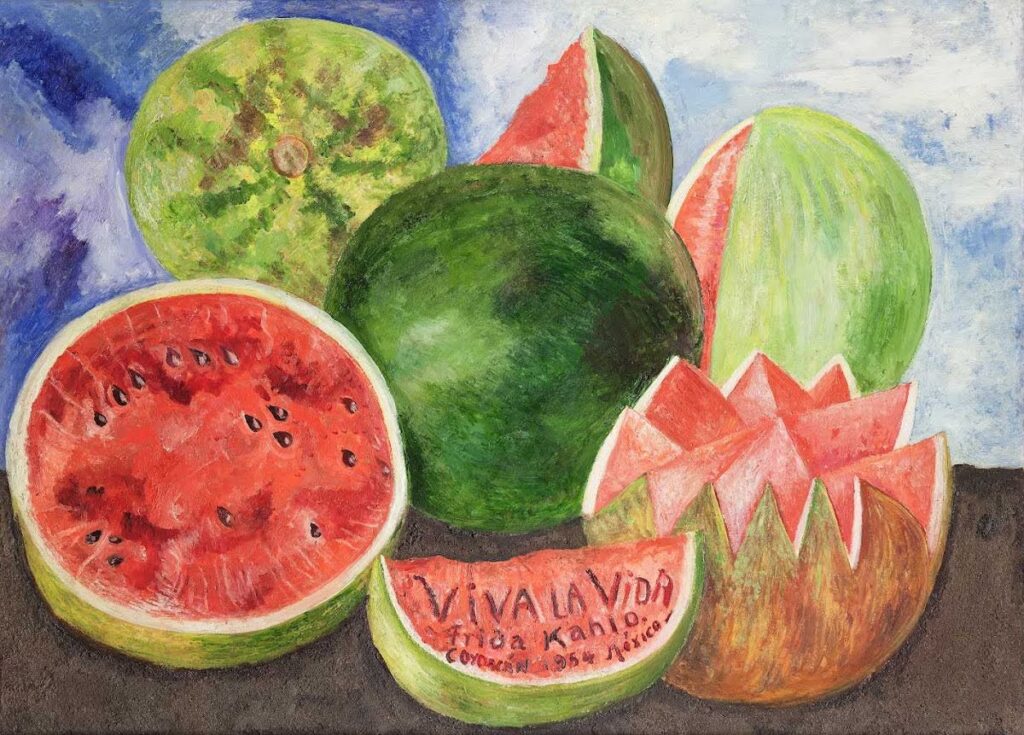
Shanequa Gay is a contemporary artist from Atlanta, Georgia who represents African-American subject matter in her work. Gay’s figures represent the culture and community of the American South. The toile wallpaper installation explores social and ethnic issues. The red and green color scheme is bold to make a statement.
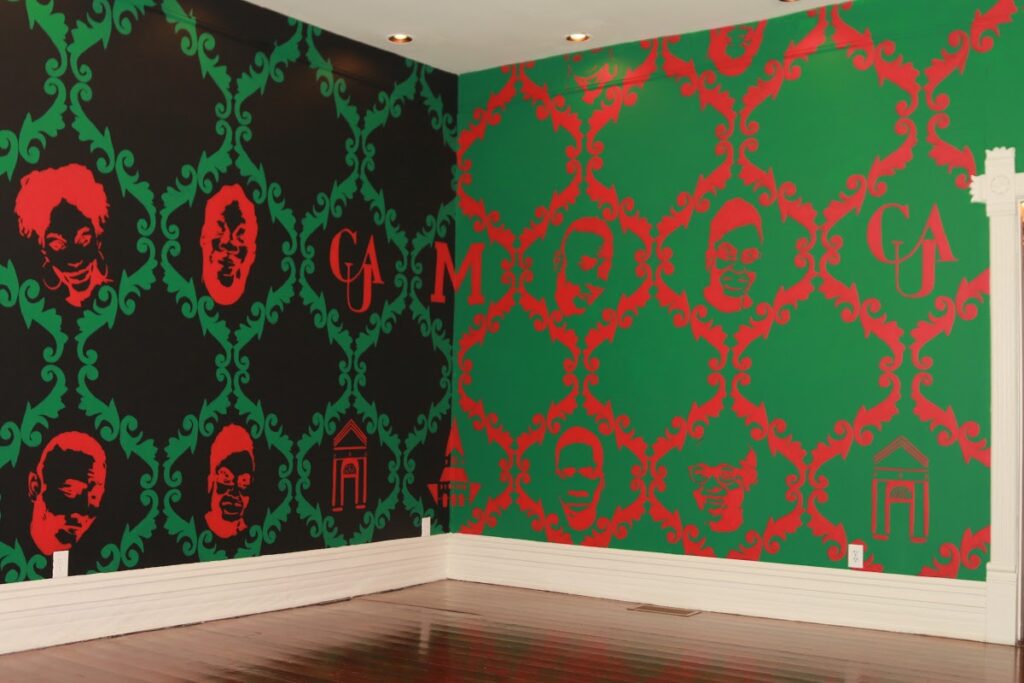
Your turn!
Experiment with different combinations of complementary colors through photography. If you don’t have a class set of cameras, students can use any device with a camera feature. Students can bring solid-colored items from home or have a selection of objects available in class. Also, provide a range of colored construction paper for backgrounds. Students pair an item with its complementary color paper background. Students photograph their items from unique angles and viewpoints.
Analogous Colors
The colors next to each other on the color wheel are analogous. Analogous colors often create a harmonious and visually pleasant appearance.
Josef Albers focused on geometric concentric shapes and color studies. His color studies explored how he could make one color look like many other colors based on the various hues around it. Albers dipped his toes in a variety of mediums from printmaking to stained glass and painting. He believed color itself was the most relative art medium and it said a lot about how we can see ourselves and our world.
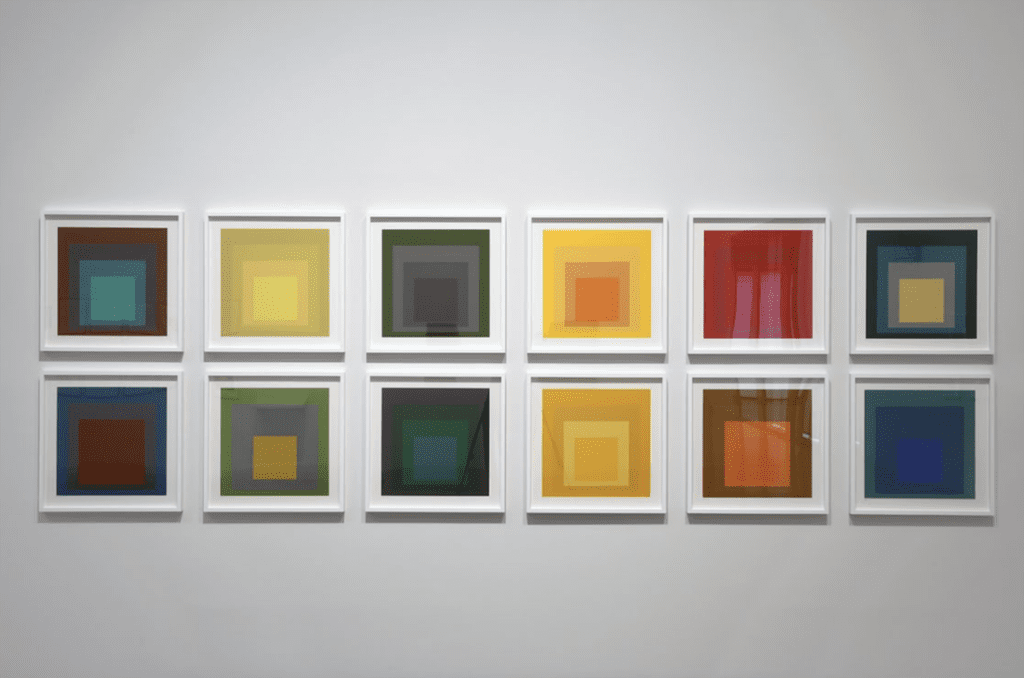
Jen Stark is a contemporary who breathes color and repetition like air. She creates paintings, sculptures, and animations of repetitive, colorful lines. Her most popular artworks feature drippy, oozy, melty lines broken up with black and white designs. She also creates zig-zag and organic mandala sculptures. Stark’s Dichroic Mandala showcases a rainbow gradation of like colors next to each other. The result is mesmerizing as colors blend effortlessly into each other.
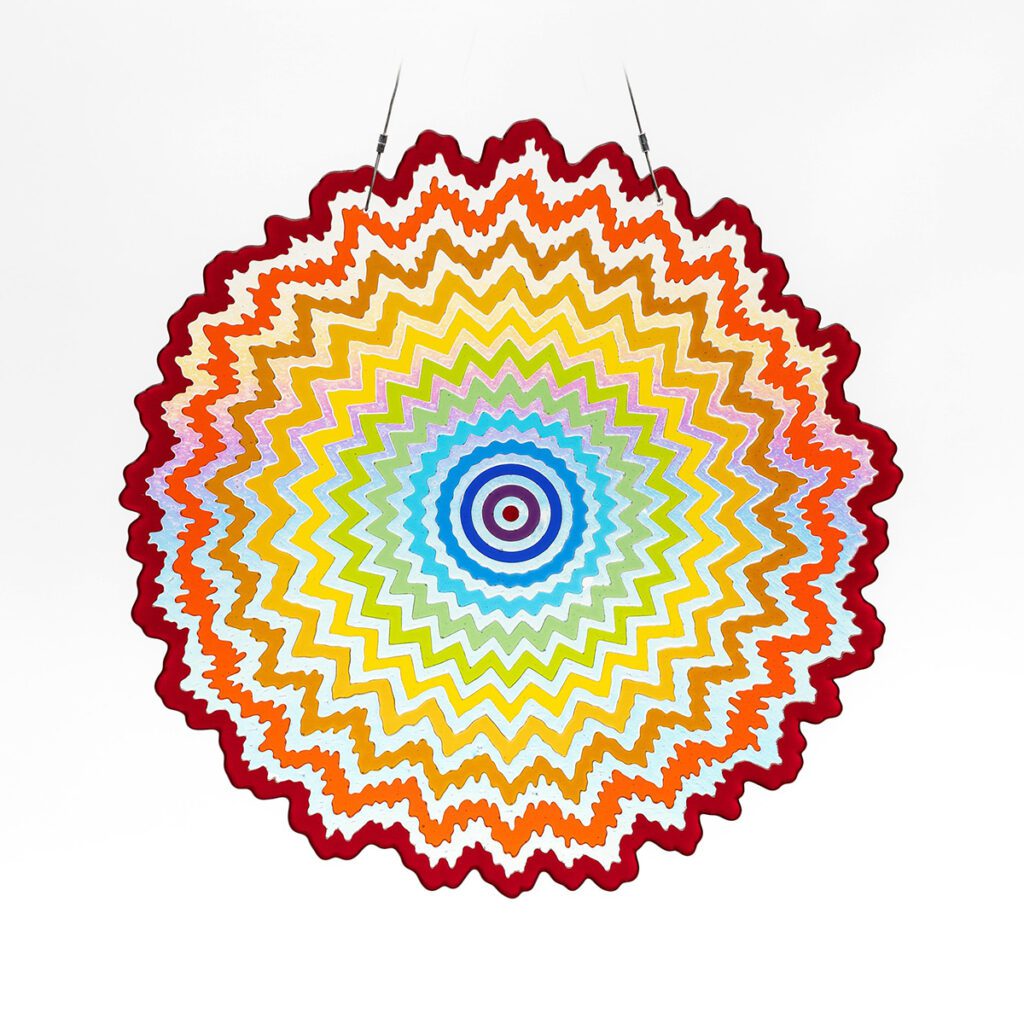
Your turn!
Students experiment with analogous colors. Start with three colors next to each other on the color wheel in the same color family, such as yellow, yellow-orange, and orange. Students create a landscape drawing with a foreground, midground, and background using one color per section.
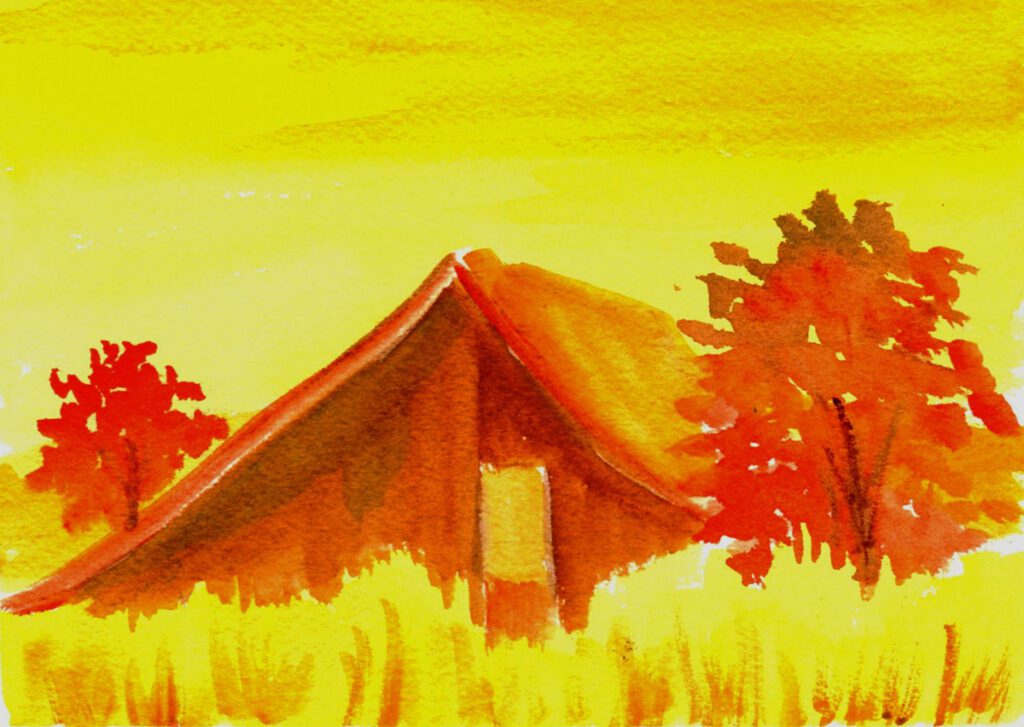
Color is essential to artists and human beings. How we mix or arrange colors next to one another makes a huge difference! Refresh your curriculum by incorporating the artists and artworks above the next time you teach these foundational color terms: tint, tone, shade, complementary colors, and analogous colors. Share your deep and colorful art history knowledge with your students. This will provide them with a vast array of historical and contemporary examples that focus on color.
If you’re still looking for more color theory resources, check out the following:
- Color Theory Basics Pack in PRO Learning
- Color Me Interested: 12 Exciting Ways to Teach the Color Wheel
What is your favorite activity to teach color theory?
Which artists do your students love to explore when learning about color?
Magazine articles and podcasts are opinions of professional education contributors and do not necessarily represent the position of the Art of Education University (AOEU) or its academic offerings. Contributors use terms in the way they are most often talked about in the scope of their educational experiences.
